Welcome to the Climate Logic Carbon Glossary, your essential resource for understanding carbon accounting, climate action, and sustainability. Whether you’re a business leader, sustainability professional, or just getting started on your climate transformation journey, this glossary will help you navigate key terms with clarity and confidence.
Climate Logic Carbon Glossary
A
Absolute Emissions
The total quantity of greenhouse gas (GHG) emissions produced by an entity, measured in metric tons of CO2 equivalent (tCO2e). Unlike intensity-based emissions, absolute emissions are not adjusted for output or economic activity.
Additionality
A principle ensuring that emissions reductions from a project would not have occurred without the intervention (e.g., carbon offset projects must provide additional benefits beyond what would have happened anyway).
Anthropogenic Emissions
GHG emissions resulting from human activities, such as fossil fuel combustion, deforestation, and industrial processes.
B
Baseline Emissions
The reference level of emissions against which reductions are measured. Baselines can be historical (past emissions) or projected (expected future emissions under a business-as-usual scenario).
Biodiversity Offsets
Conservation activities designed to compensate for unavoidable biodiversity loss from development projects, often used alongside carbon offsets.
Bioenergy with Carbon Capture and Storage (BECCS)
A climate mitigation technology that captures and stores CO2 from bioenergy production, resulting in negative emissions.
C
Carbon Accounting
The process of measuring, tracking, and reporting GHG emissions from an organization, product, or activity, often aligned with frameworks like the Greenhouse Gas Protocol.
Carbon Border Adjustment Mechanism (CBAM)
A policy tool that applies a carbon price to imported goods to prevent carbon leakage and ensure fair competition for industries in regions with strict emissions policies.
Carbon Budget
The maximum amount of CO2 that can be emitted while keeping global warming within a certain temperature threshold, such as 1.5°C above pre-industrial levels.
Carbon Footprint
The total amount of GHG emissions caused directly and indirectly by an individual, organization, product, or activity, expressed in CO2e.
Carbon Neutrality
A state where an entity balances its CO2 emissions with carbon removals or offsets, achieving a net-zero carbon footprint.
Carbon Offsets
Credits purchased to compensate for emissions by funding projects that remove or prevent GHGs from entering the atmosphere, such as reforestation or renewable energy initiatives.
Carbon Pricing
An economic tool to reduce emissions by assigning a cost to carbon pollution, typically through carbon taxes or emissions trading systems (cap-and-trade).
Carbon Removal
Technologies or natural solutions that actively remove CO2 from the atmosphere, including direct air capture, afforestation, and soil carbon sequestration.
Carbon Sink
A natural or artificial system that absorbs more CO2 than it emits, such as forests, oceans, and soil.
Carbon Trading
The buying and selling of carbon credits within a regulatory or voluntary market to meet emissions reduction targets.
D
Decarbonisation
The process of reducing carbon emissions from economic activities, primarily by switching to low-carbon energy sources and improving energy efficiency.
Direct Emissions
GHG emissions from sources owned or controlled by an entity, such as fuel combustion in company-owned vehicles (Scope 1 emissions).
E
Embodied Carbon
The total carbon footprint of a material or product throughout its lifecycle, including extraction, production, transportation, and disposal.
Emission Factors
Values used to estimate emissions based on activity data (e.g., kg CO2 per kWh of electricity consumed).
Emissions Reduction Target
A specific goal set by an entity to lower its GHG emissions within a defined timeframe, often aligned with the Paris Agreement.
F
Fugitive Emissions
Unintended GHG emissions from industrial processes, such as methane leaks from oil and gas operations.
G
GHG Protocol
The leading global standard for measuring and managing GHG emissions, developed by the World Resources Institute (WRI) and the World Business Council for Sustainable Development (WBCSD).
Greenwashing
Misleading claims about the environmental benefits of a product, service, or company practices, often to appear more sustainable than they actually are.
N
Net Zero
A state where all GHG emissions are reduced as much as possible, with any remaining emissions balanced by removals.
S
Scope 1, 2, and 3 Emissions
- Scope 1: Direct emissions from owned or controlled sources (e.g., company vehicles, manufacturing).
- Scope 2: Indirect emissions from purchased electricity, steam, heating, and cooling.
- Scope 3: All other indirect emissions in the value chain (e.g., supply chain emissions, employee commuting, product use and disposal).
T
Task Force on Climate-related Financial Disclosures (TCFD)
A global framework providing guidance for companies on disclosing climate-related financial risks and opportunities.
Take action
Understanding these key terms is a crucial step toward informed climate action. At Climate Logic, we help businesses accelerate their sustainability transition with practical, science-based strategies. Need help with carbon accounting? Contact us to learn more.

![[Climate Logic]](https://efe1f5e8.delivery.rocketcdn.me/wp-content/uploads/2023/07/climate-logic_logo_reverse.png)

